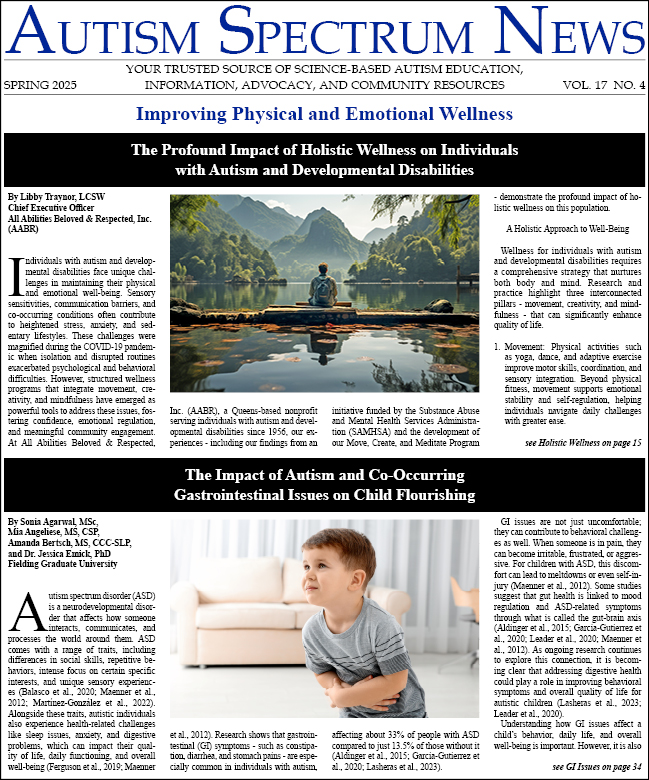Augmentative and Alternative Communication (AAC) plays an important role in empowering individuals with autism and other complex communication needs to engage meaningfully in their communities. Essential to AAC adoption is the evidence-based practice of modeling, wherein communication partners demonstrate the effective use of AAC systems during everyday activities. Communication partners pair their verbal speech with the symbols or representations on the device or support. Recent advances in artificial intelligence (AI) offer new opportunities to enhance AAC modeling through tools like ChatGPT, Claude, Poe, and more. Although the use of AI to develop modeling scripts can be a significant support, there are crucial ingredients to the recipe.

Passed Down from Generations: The Research Base
Modeling is widely recognized as a cornerstone of AAC intervention. By demonstrating the use of core vocabulary—words that make up the majority of daily communication—in real-world contexts, communication partners create meaningful learning opportunities. The research underscores the efficacy of modeling in AAC. Sennott, Light, and McNaughton (2016) found significant gains in vocabulary acquisition, syntax, and pragmatics through AAC modeling interventions. Similarly, Biggs, Carter, and Gilson (2019) emphasize the importance of training natural communication partners, such as parents and educators, in modeling techniques. Senner et al. (2019) demonstrated that parent training in partner-augmented input significantly improved both parent and child engagement with AAC systems. Although many studies have demonstrated the value of modeling, it is not consistently implemented in school settings for a myriad of reasons. One reason is that staff do not have specific scripts to model unique activities, and without specific modeling scripts, staff are unsure how or what to model.
Main Ingredient: Aided Language Stimulation (ALS)
Aided Language Stimulation (ALS) is an evidence-based strategy around AAC modeling. This approach is essential for effective implementation because it demonstrates how AAC can be used functionally in natural contexts, allowing AAC users to see and learn language in action. ALS enhances language development by providing consistent exposure to core vocabulary and demonstrating appropriate use, thereby bridging the gap between receptive and expressive communication skills (Sennott et al., 2016). Including ALS in the prompting recipe is a key ingredient for success!
AI as the Rising Agent
Language-generating AI tools, like ChatGPT, have the potential to transform how professionals approach script development. The systematic review by Hopcan et al. (2023) on AI in special education highlights the potential of AI-driven tools to enhance learning and communication for students with disabilities. It emphasizes the value of adaptive technologies in personalizing learning and providing interactive experiences, aligning with the principles of AAC modeling. These tools enable the rapid generation of tailored-modeling scripts, freeing up time for clinicians and educators to focus on implementation. However, the quality of AI-generated scripts depends on the expertise of the human in the loop.
Prompting Recipe
To maximize effectiveness, professionals should:
- Identify Core Words: Select words relevant to the activity, such as “stop,” “go,” “look,” or “help.”
- Describe the Activity Context: Provide details about the setting and objectives, such as a painting class or a group ball game.
- Explicit Modeling Approach: Include specific language in your prompt directing the AI tool to use aided language stimulation (ALS). This will ensure the modeling script is aligned with appropriate research practices
- Analyze and Adapt: Be the human in the loop and edit the AI output to meet individual needs, ensuring alignment with evidence-based practices.
If this prompting recipe is followed, the script produced should provide guidance to support professionals in successfully modeling language, especially in more unstructured activities.
Example Prompt:
“You are a special education teacher working with students with complex communication needs using augmentative and alternative communication (AAC). Please develop a modeling script for a support professional to implement aided language simulation (ALS) during a cooking activity, making Enchurritos modeling the words “in,” “out,” “on, and “off.” Please be sure to indicate on the script when the individual should tap on the words on the device.”
Prompt Frame:
To assist in the use of AI in script generation, we have included a prompt frame with fill-in-the-blanks to develop a script based on specific activities and core words:
“You are a special education teacher working with students with complex communication needs using augmentative and alternative communication (AAC). Please develop a modeling script for a support professional to implement aided language simulation (ALS) during a ___________ activity modeling the words_________________. Please be sure to indicate on the script when the individual should tap on the words on the device.”
Where Things Can Go Wrong!
Prompting is integral to high-quality AI generation because if a vague prompt is utilized and the product is not audited, the result will be insufficient. As presented above, utilizing the prompting recipe will aid in an effective script. For example, when a prompt was added into ChatGPT that did not specify “using ALS,” the script that was produced instructed the communication partner to direct the student to repeat the word on their device after it was modeled. This pressure to respond is not recommended for effective modeling. Utilizing a structured prompt, like the frame above, ensures that AI-generated scripts align with evidence-based practices and the unique needs of AAC users.
Application to Recreational Activities: Cooking
Recreational activities offer rich opportunities for AAC modeling, promoting both social and communication skills. Consider a cooking class where the teacher is using an adapted recipe from The Accessible Chef to make Enchurritos where the core words to be modeled are “in,” “out,” “on,” and “off”:
- Identify Core Words: in, out, on, off
- Describe the Activity Context: Cooking the recipe Enchurritos from the Accessible Chef
- Explicit Modeling Approach: Using an aided language stimulation (ALS) model
Incorporating modeling strategies into naturalistic activities, such as family leisure, can lead to improved participation and expressive language outcomes (Senner et al., 2019) and foster creativity and engagement (Sennott et al., 2016). However, after the prompt is produced, reviewing your product is essential.
Human in the Loop: Assessing and Updating AI-Generated Scripts
While AI-generated scripts are invaluable, human expertise is crucial in assessing and refining them. The final step in our prompt recipe is “Analyze and Adapt.” In this step, professionals should be sure to:
- Align Scripts with Individual Goals: Ensure the modeled words and activities align with the AAC user’s specific communication objectives.
- Monitor Effectiveness: Use data collection templates to track engagement and vocabulary usage.
- Adjust Based on Feedback: Modify scripts based on observed successes and challenges during implementation.
The systematic review by Hopcan et al. (2023) highlights the importance of teacher involvement in implementing AI tools effectively in special education. Personalized and adaptive approaches, as supported by AI, enhance learning outcomes and engagement.
The Final Course
Integrating AI tools into AAC modeling opens new avenues for customization and efficiency. By combining AI-driven script development with specific modeling approaches, like aided language stimulation (ALS), educators and clinicians can create meaningful communication opportunities during recreational and leisure activities. However, the role of the human in the loop remains indispensable. Professionals must ensure scripts are personalized, effective, and aligned with the unique needs of AAC users. As technology evolves, so too does the potential to empower individuals with AAC, fostering their communication, creativity, and social inclusion.
Lauren Tucker, EdD, is Associate Professor of Special Education, and Kristy Hynes, PhD, BCBA-D, is Assistant Professor of Special Education at Southern Connecticut State University. They can be reached by email at tuckerL7@southernct.edu and hynesk3@southernct.edu.
References
Biggs, E. E., Carter, E. W., & Gilson, C. B. (2019). A scoping review of the involvement of children’s communication partners in aided augmentative and alternative communication modeling interventions. American Journal of Speech-Language Pathology, 28(3), 743–758.
Hopcan, S., Polat, E., Ozturk, M. E., & Ozturk, L. (2023). Artificial intelligence in special education: A systematic review. Interactive Learning Environments, 31(10), 7335-7353.
Senner, J. E., Post, K. A., Baud, M. R., Patterson, B., Bolin, B., Lopez, J., & Williams, E. (2019). Effects of parent instruction in partner-augmented input on parent and child speech-generating device use. Technology and Disability, 31(1-2), 27-38.
Sennott, S. C., Light, J., & McNaughton, D. (2016). AAC modeling intervention research review. Research and Practice for Persons with Severe Disabilities, 41(2), 101-115.





